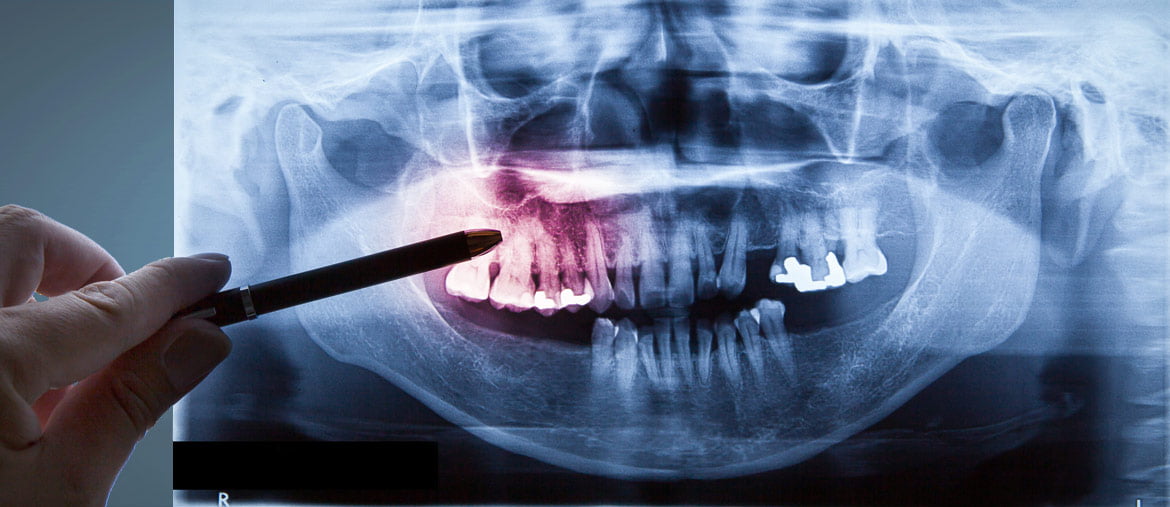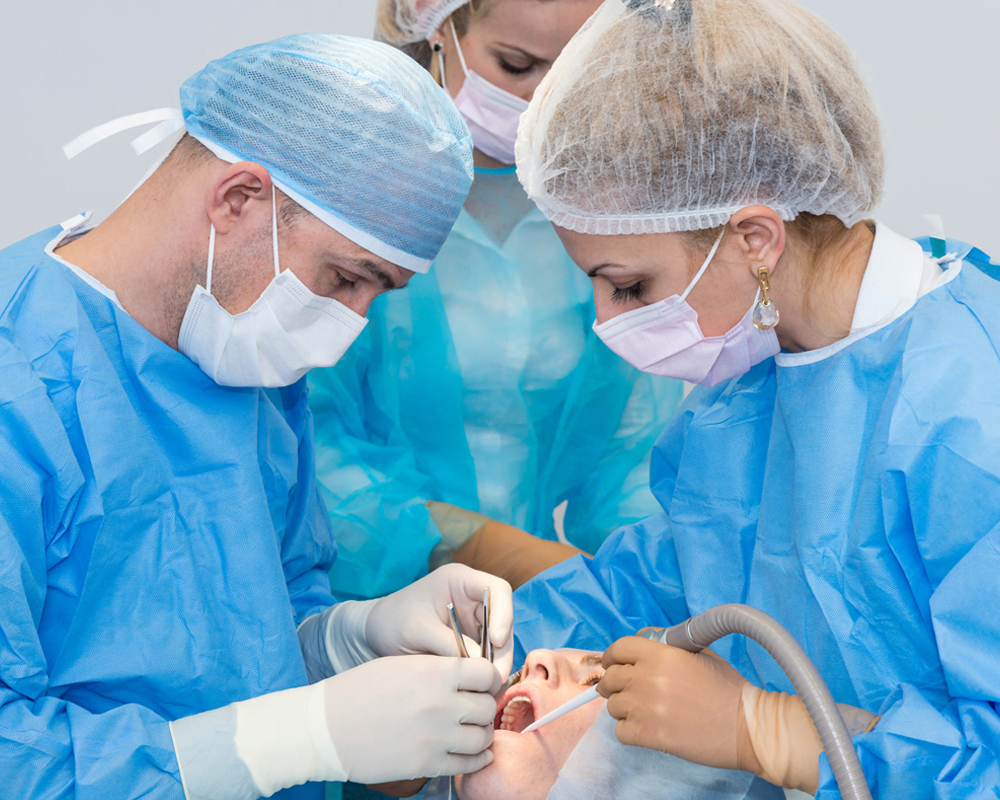
We can do all kind of oral surgery in our clinic with the latest dental technology like ;
Tooth extractions,wisdom tooth exractions,implant surgery,all kind of bone and gum surgery,bone grafting,sinüs lifting,etc. in modern clinic rooms .
Reasons of tooth extraction. Deep tooth decays
- Severe gum disease (bone loss), which has ruined too much of the supporting bone around the tooth.
. For orthodontic treatment due to severe crowding (too many teeth for the space available) in order to make enough space for the remaining teeth to be nicely aligned.
- Teeth which can not be saved by root canal treatment .
- Fractured teeth
- Insufficient space especially for the lower wisdom teeth (impacted third molars).
Surgical extractions
Surgical extractions normally require an incision, which means that the soft tissue around the tooth which is to be surgically removed has to be raised. Typically, a small amount of bone has to be removed around the impacted wisdom tooth. When the wisdom tooth lie more or less horizontally, the crown portion of the tooth might have to be removed as one piece or be split into a number of pieces – to be able to access and remove the remaining part of the tooth.
What to expect after surgery
After the tooth has been removed, you may need stitches/sutures. Some stitches dissolve over time, and some have to be removed normally after a week to ten days. You will also be asked to gently bite down on cotton gauze placed over the wound to help stop bleeding.
In most cases, the recovery period after an uncomplicated tooth extraction lasts only a few days up to five to six days. The most important issue after an extraction is to preserve the formed blood clot.
Once a tooth has been extracted, a blood clot normally forms in the socket, usually within an hour. It is not uncommon that slight bleeding can be noticed up to 24 hours after the extraction. The wound over the dental socket takes about a week to heal. Thereafter, the socket will gradually fill in with gum tissue and bone over a period of about one to two months. Before bone has fully filled out the extraction site (alveol), it can at least take another six months.

The following will help to speed up the recovery:
- In existance of pain, you take painkillers and antibiotics as prescribed by your dentist.
- Wait until the following day before you start rinsing your mouth gently with anticeptic mouth wash several times a day to keep the surgical area clean.
- Rinse 3-4 times a day with an antiseptic mouth wash.
- Relax after surgery. Physical activity within the first two days after surgery may cause bleeding.
- If you happen to be a smoker, try to avoid smoking – at least for the first few days.
- Eat warm and soft food for a couple of days in order to reduce the muscle activity in the chewing muscles, thereby reducing the risk for dislocating the blood clot.
The Dentists in our clinic have the right equipment and sterile environment in which to perform this type of procedure with the utmost care and your recovery can be fairly quick. In the case of surgical extractions you may have some swelling after the procedure and discomfort that can be eased with over the counter painkillers and antibiotics.
Sinus Lift Procedure
In order to place the implants successfully we need sufficient bone. In certain situations dentist need to perform specific procedures in order to create bone volume like sinus lifting.
The maxillary sinuses are behind your cheeks and on top of the upper teeth. Sinuses are like empty rooms that have nothing at all in them. Some of the roots of the natural upper teeth extend up into the maxillary sinuses. When these upper teeth are removed, there is often just an egg shell thin wall of bone separating the maxillary sinus and the mouth. Dental implants need bone to hold them in place so when the sinus wall is very thin, it is impossible to place dental implants in this bone.
The dental implant surgeon enters the sinus from the side above where the upper teeth used to be. The sinus membrane is then lifted upward and donor bone is inserted into the floor of the sinus. After several months of healing, the bone becomes part of the patient’s jaw and dental implants can be inserted and stabilized in this new sinus bone.
The sinus lifting makes it possible for many patients to have dental implants that is so important that years ago there was no other option other than wearing loose dentures.

